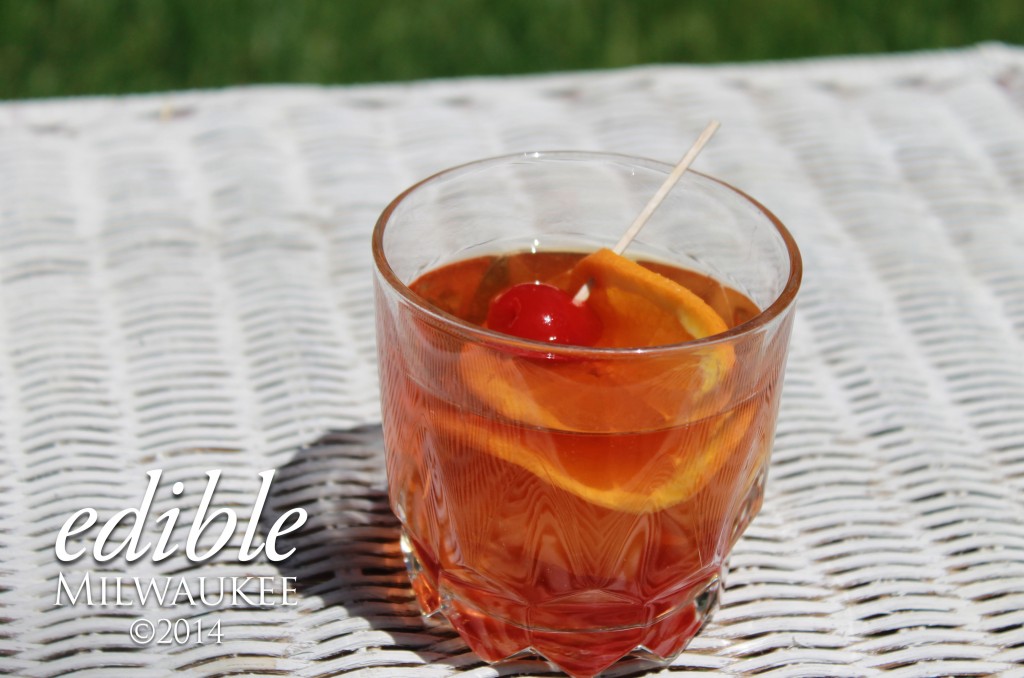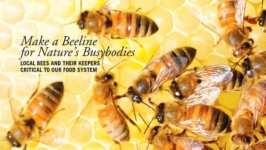Old Fashioned, Wisconsin's (Un)Official State Cocktail
How nostalgia gave birth to the Old Fashioned
In the Holy Trinity of old-school cocktails – the Martini, the Manhattan, and the Old Fashioned – the one most intimately associated with the great State of Wisconsin is certainly the latter. We have made it our own so thoroughly that when we are presented with an actual Old Fashioned, we sometimes refuse to believe our taste buds. Over the years, I’ve heard many of my guests complain that their out-of-state bartenders “don’t even know how to make it.” The classical formula is as nearly perfect as a drink can be, but Wisconsin iconoclasts have de- and re-constructed this drink to suit nearly any palate.
In our state, if one orders an Old Fashioned, likely the bartender will serve 2 ounces of Korbel brandy and an ounce of premixed “bug juice”: sugar, water and Angostura bitters. The premixed ingredients save the steps of combining and muddling, while silently testifying to the popularity of the drink. The brandy and burgundy-colored slurry are combined in their eponymous glass. The default setting of this drink seems to be “sweet,” so your bartender will gun a splash of Sprite or 7-up into the glass before perching an orange-and-cherry flag on the rim. However, there are other options, and so they unfold: sour, water or seltzer? Olives or fruit? Mushrooms? Twist? Brussels sprouts?
Trouble is, that’s not an Old Fashioned. That’s what an Old Fashioned has become, in Wisconsin. It’s a fine distinction, to be sure, but in the interest of accuracy, if you really want to get down to the roots of this historical beverage, consider a time before the Old Fashioned.
Spirit and bitters, sugar and water: in the 1800’s this simple formula produced a drink called the Whiskey Cocktail. It was the drink of choice for the sporting set. These mostly young men were racing and hunting enthusiasts who liked to drink a Whiskey Cocktail in the morning. The spirit provided the hair of the dog, and the bitters settled the stomach. There were variations featuring gin and rum, but mostly it was prepared with bourbon or rye. The original formulation of this drink is elegant in its simplicity, stripped-down but powerful.
Over time, bartenders played around with this formula and started adding to it. Orange curacao, maraschino liqueur and absinthe all made an appearance in these “fancy” or “improved” cocktails. Before long, every corner bar had its own featured variation of the Whiskey Cocktail, leading some drinkers to wax nostalgic for. . . what?
An old-fashioned cocktail.
The unimproved Whiskey Cocktail came to be known as the Old Fashioned, and it was popular among 19th century purists. Then something unexpected happened. One smallish pocket of the United States branched off with its own formulation. It’s a clear example of cultural divergence, in which one area develops its own way of responding to a more widespread change or challenge.
Just how did Wisconsin’s peculiar recipe come to prevail? I am not the first to wonder, and Robert O. Simonson points us to Jerry Minnich. Writing for Madison’s Isthmus weekly, Minnich had a revelation when he realized that at the very moment in history that the Old Fashioned was enjoying its renaissance, three California lumbermen launched their brandy distillation business. Josef, Antone and Francis Korbel’s brandy was showcased at Chicago’s Columbian Exhibition in 1893. Fully one-quarter of America’s population attended the fair, including many from Wisconsin. Given the German cultural preference for brandy over whiskey, it seems a more plausible solution to the riddle than any other.
You will recall that many different spirits were “plugged into” the original cocktail’s formula, so switching out the whiskey for brandy was a natural branching of the drink’s evolution. The Whiskey Cocktail became the Old- Fashioned, and Wisconsin now had its Brandy Old-Fashioned.
But how to explain all that fruit? You recall that the original formulation called only for a lemon twist, and even that was optional. The next piece of the puzzle was likely just around the corner: Prohibition.
Prohibition made it illegal to produce, transport, import, and sell beverage alcohol. It’s easy for most adults to understand why this new law might have suffered a deficit of popularity. The verve with which the Dry Movement was embraced naturally varied from town to town and state to state; it did not fare well in Wisconsin, which had been settled almost exclusively by Western Europeans for whom beverage alcohol was a cultural birthright.
So put yourself in their shoes: one of the real challenges of Prohibition-era drinking was getting your hands on any alcohol worth drinking. If it was any good, it was expensive, and the more readily available it was, the shoddier its quality. Underground bartenders and would-be home mixologists did whatever they could to make the best of a bad situation. This is the era when fruit juice and various syrups really begin to appear in cocktail recipes. Most historians agree this is when fruit started to pile up in the Old Fashioned. In different times and places this included orange, cherry, lemon, lime and even pineapple. In general, this would have aligned nicely with the German penchant for drinking sweet beverages (as evidenced by many of their white wines).
It seems Wisconsin’s Brandy Old Fashioned resulted from the perfect storm of a cocktail’s revival in the hands of bartenders serving a naturally brandy-loving population, at a time when three brothers from California were flooding the Midwest with their brandy.
Let the drinking begin. I suggest you try both these recipes, and evaluate them for yourself. As always, please do your research responsibly.
Whiskey Cocktail
- 1/2 tsp. refined sugar
- 2-3 dashes Angostura Bitters
- 1 tbl. Water
- 2 oz. whiskey, bourbon or rye
Combine the first three ingredients in an old fashioned (a.k.a. tub) glass. Crush the sugar with your muddler or whatever you have handy. Roll the glass in your hand such that the mixture coats the interior of the glass. Add one large cube of ice and stir to combine.
Wisconsin-style Brandy Old Fashioned
- 2 oz. Korbel or other light-bodied brandy
- 2 dashes Angostura bitters
- 1 sugar cube
- 2 orange slices
- 2 maraschino cherries
Put the sugar in the base of your old-fashioned glass and dash the bitters onto it. Add the fruit and muddle, avoiding the pith, until the sugar is dissolved. Add the brandy and stir to combine. Add one large chunk of ice and top with sweet or sour, water or seltzer, press or nothing at all. Garnish as desired.





